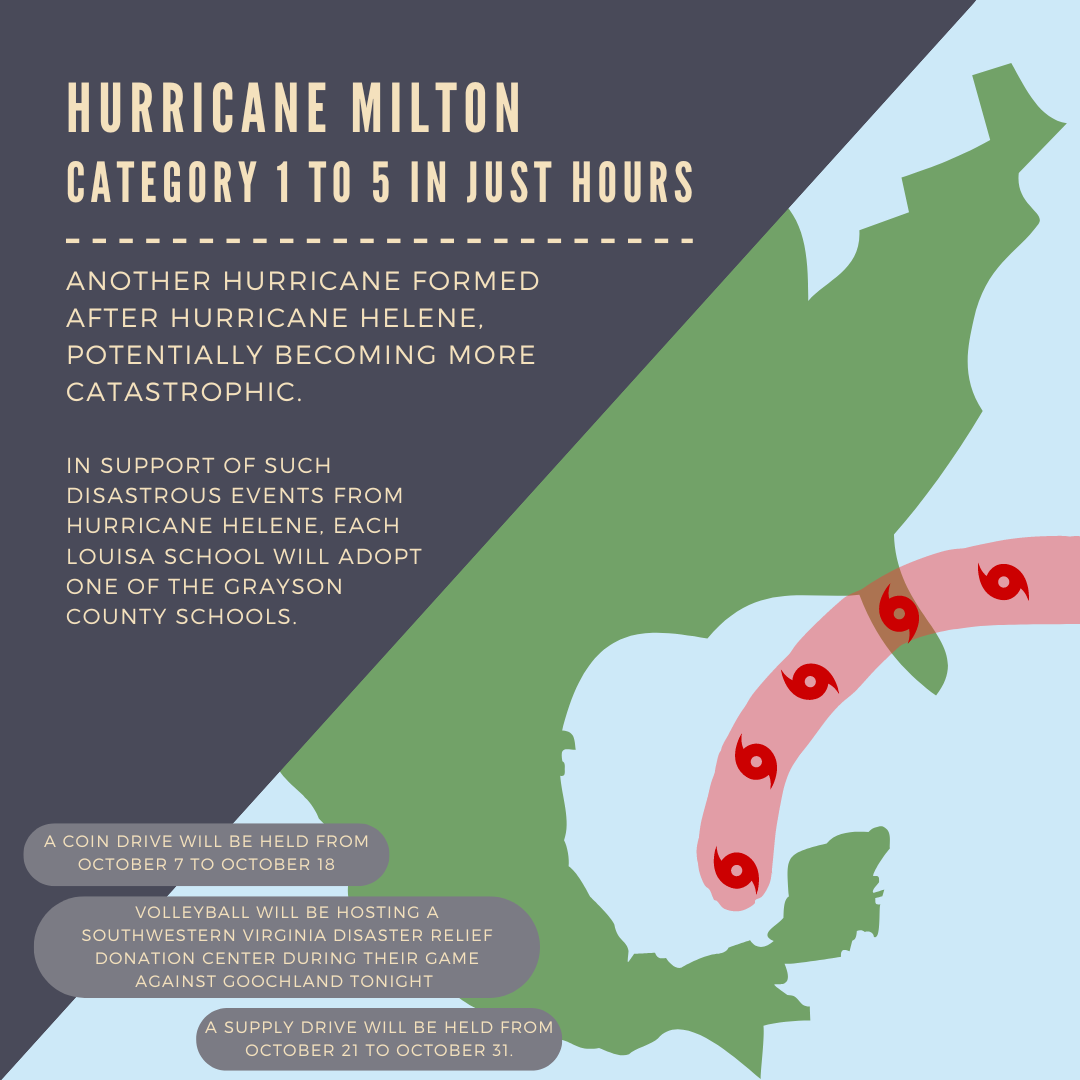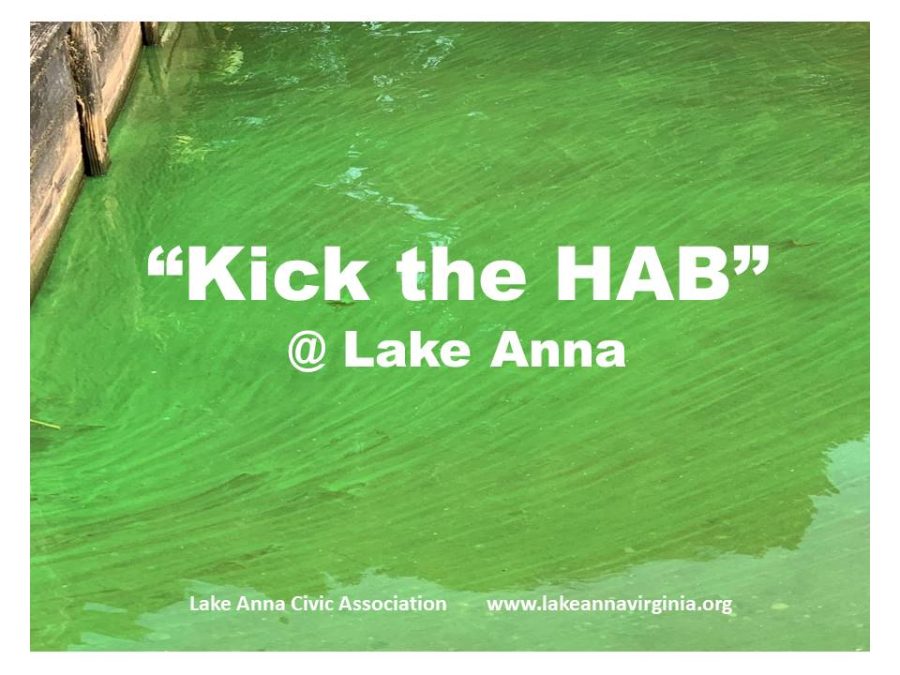Harmful algae bloom in Lake Anna
Courtesy of Lake Anna Civic Association. Green colored water in mid Pamunkey Creek, taken from a homeowners dock. Featuring name of LACA program.
September 16, 2022
As summer winds down, one thing at Lake Anna continues to rise: the harmful cyanobacteria algae bloom. Due to this outbreak, a recreational advisory for the lake has been in effect since 2018.
The Department of Environmental Quality (DEQ) tests the water in Lake Anna on a monthly basis and has been conducting tests since the 1970’s when the lake was first formed.
“DEQ tests for different parameters, whether its E Coli bacteria, nutrients, or elevated levels of salinity, testing freshwater and saltwater,” Lake Anna Civic Associate Harry Looney said.
As DEQ tests the water, they send samples to the Virginia Department of Health (VDH) for analysis. The samples analyzed in 2018 raised concerns, causing a larger investigation to be conducted. Samples from the northern end of Lake Anna were found to have high levels of cyanobacteria.
“Although monthly tests were conducted, the green colored water was the indicator,” Looney said. “When the cyanos in the cyanobacteria absorb sunlight, it adds a bluish-green color to the water, raising concerns. While the water can look normal to the eye, it could contain higher concentrations of bacteria than the Department of Health deems safe for human recreational purposes.”
According to the Virginia Department of Health’s website, areas of the North Anna River, Pamunkey River branches, and Lake Anna State Park have all been confirmed to contain high levels of cyanobacteria.
“People and pets are advised to avoid swimming, windsurfing and stand-up-paddle-boarding, as well as other activities that pose a risk of ingesting water,” the Virginia Department of Health’s website said. “Activities such as boating may continue with proper precaution in advisory areas.”
In the beginning of September, the VDH planned to check up on areas above Route 208.
Cyanobacteria can generate toxins, specifically hepatotoxins and neurotoxins. The most prevalent toxin in Lake Anna is hepatotoxins. Hepatotoxins attack liver tissue in humans, animals, and fish. Hepatotoxins are at a high concentration in Lake Anna. While it does not exceed a threshold for humans, it does exceed a threshold that other states have set for animals. For example, dogs that swim and consume water while swimming can be harmed.
“As the liver tries to filter it out, it gets absorbed into the tissue adding a toxic nature that can cause death from liver damage,” Looney said.
The second category is neurotoxins. Although neurotoxins are in Lake Anna, they sit at low levels, making hepatotoxins the main concern.
“The best way that I can describe a neurotoxin is a rattlesnake bite,” Looney said. “This toxin attacks your nervous system.”
Since the algae bloom is concentrated on the northern end of the lake, the southern end has no recreational health advisories. The circulation of water and higher temperatures are two of the main reasons the cyanobacteria has not spread to the southern end of Lake Anna.
The North Anna Power Station is located towards the southern end. The water temperature is warmer because the water flows through the reactors, absorbing the heat and cooling down the reactors. Each of the reactors pulls one million gallons of water per minute from the cold side and discharges it into the hot side.
“Circulation is an important factor here because the water is constantly flowing,” Looney said. “The water from the cold side is re-entering into the hot side, making it hard for the algae to grow.”
The Lake Anna Civic Association (LACA) has developed a program known as Kick the Harmful Algae Bloom (HAB) to deal with the cyanobacteria. The program was co-developed and managed by their environmental preservation committee and water quality committee.
“The Lake Anna Civic Association has been collecting data since 2002 more from a water quality standpoint,” Looney said. “For the past three years we have been collecting data focused on Cyanobacteria during the recreational season on a weekly basis. “We have analyzed that data, looked at many research papers, and attended seminars.”
The LACA has began a research experiment in which they apply a hydrogen peroxide based algaecide called “Lake Guard Oxi” to four main creeks on the northern end of Lake Anna; Pamunkey Creek, Duckinhole Creek, Goldmine Creek, and Beverly Run.
“These areas have all had their own results which is why we chose these four locations,” Looney said. “These are areas of different size, watersheds, and flow rates.”
While the Lake Guard Oxi may reduce the cyanobacteria, it will be expensive and time consuming to treat the entire northern end of Lake Anna. However, the LACA continues to work on remediation and mitigation efforts to improve the lake’s water quality.
































































